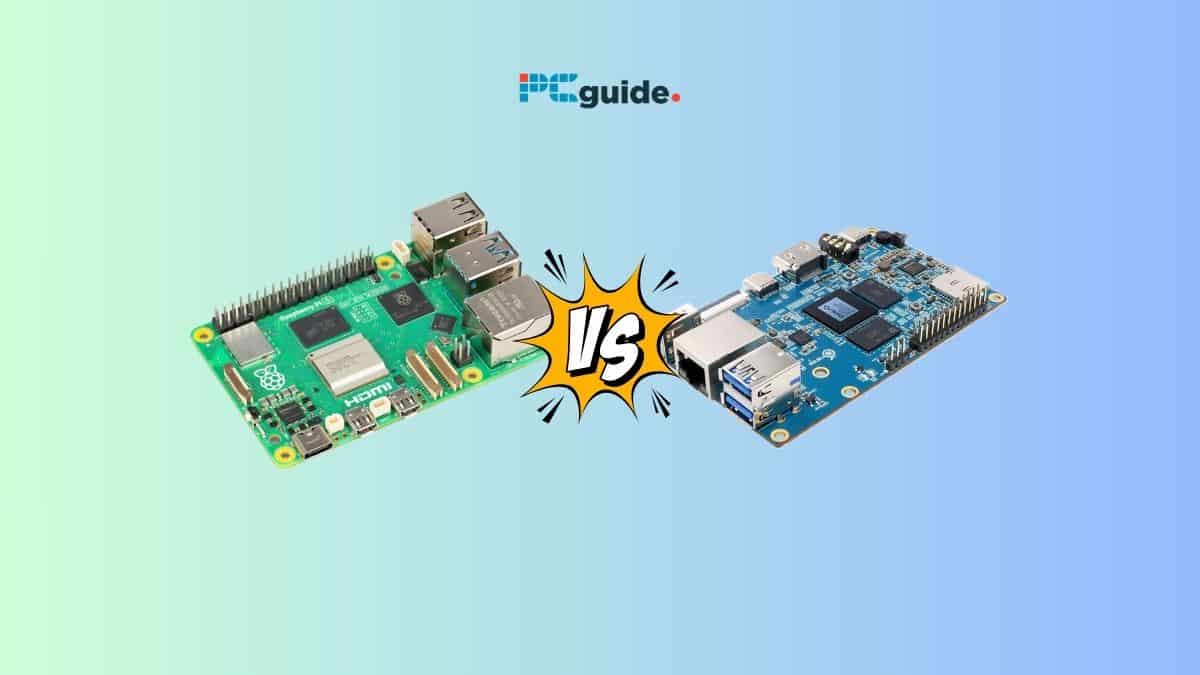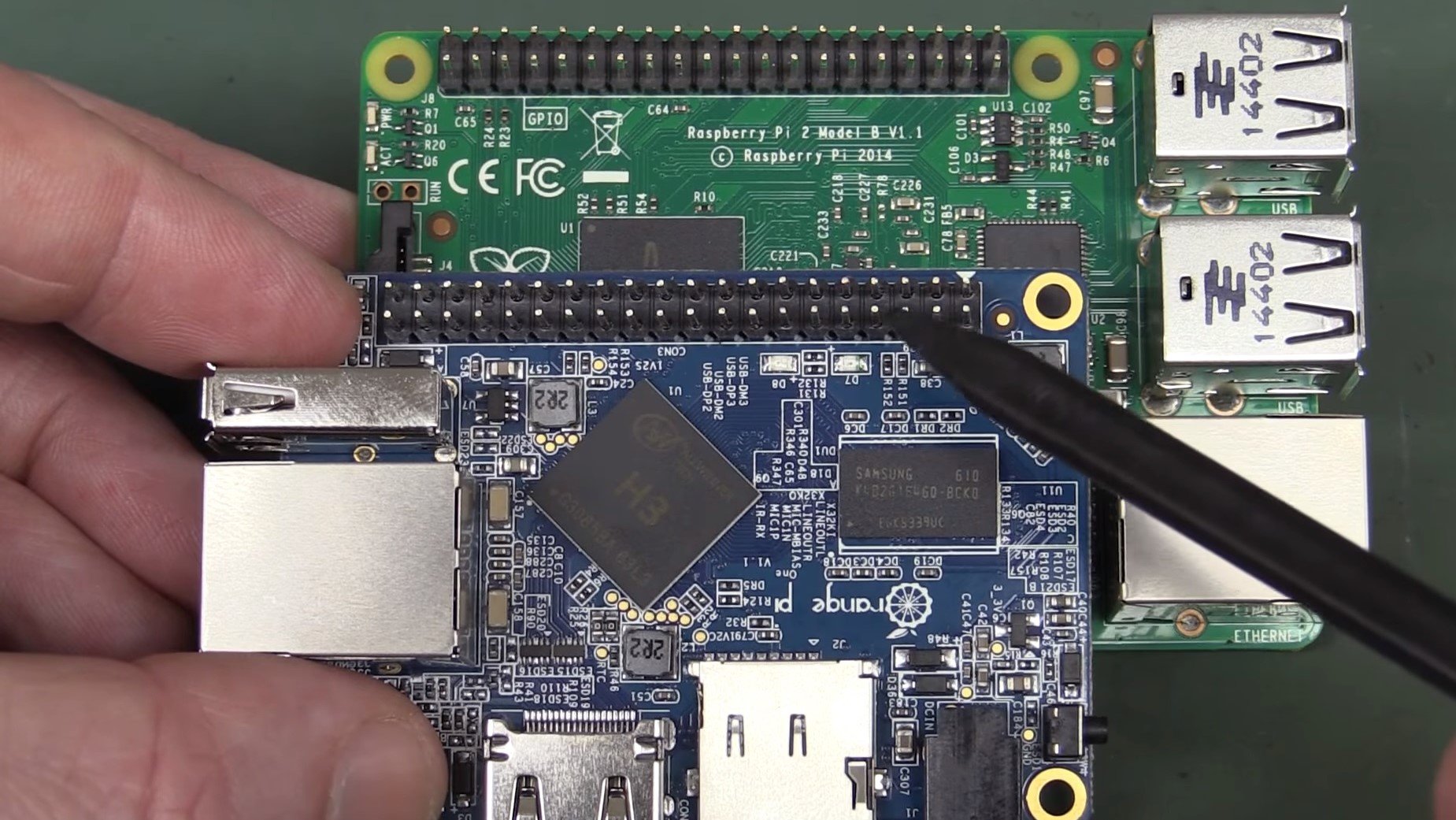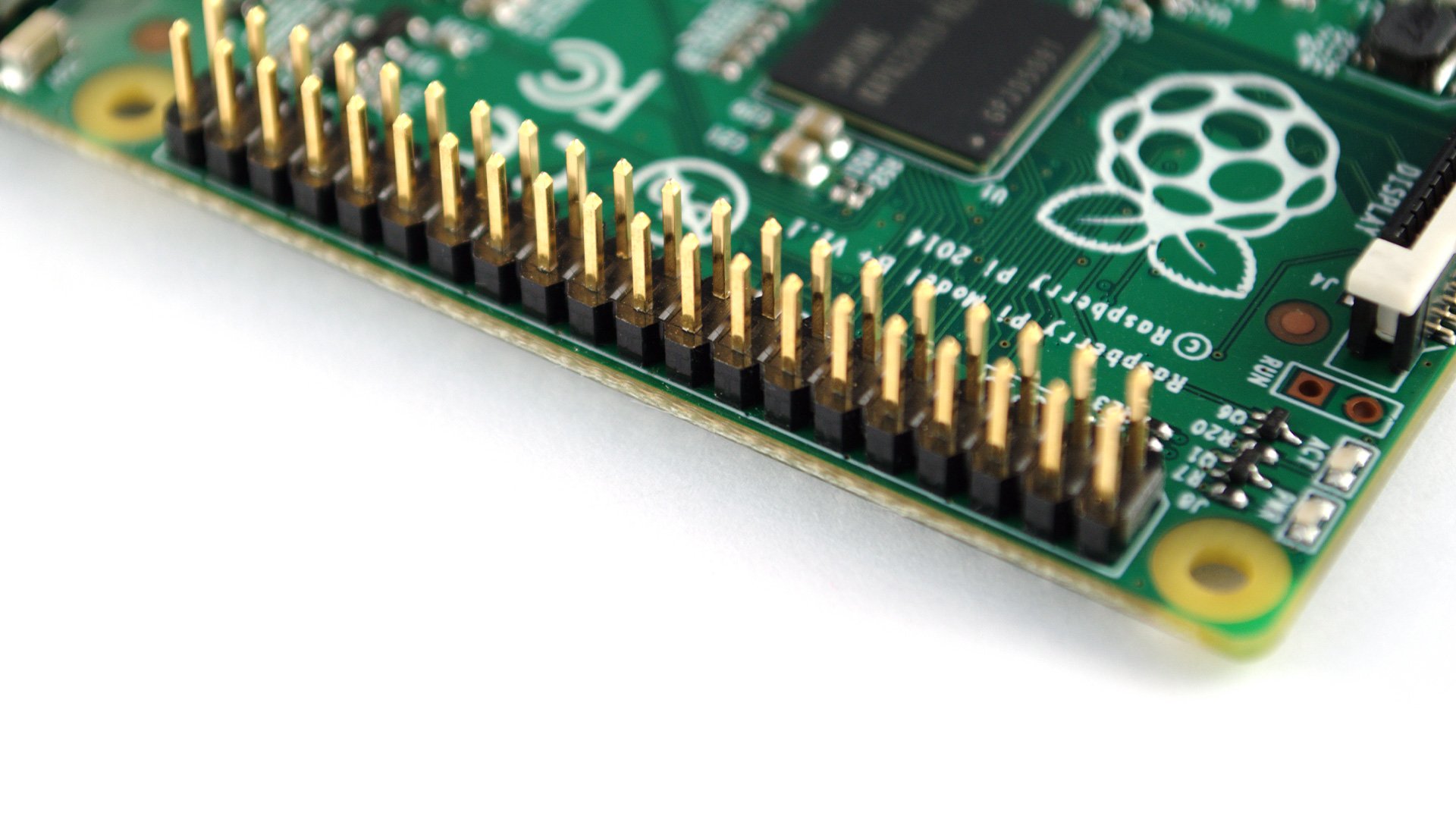Raspberry Pi 5 vs Orange Pi 5 – What’s the difference?

Table of Contents
If you are interested in single-board computers, you might be wondering how the upcoming Raspberry Pi 5 vs. Orange Pi 5 compare. In this article, we will explore the main differences between these two devices and help you decide which one is best for your needs.
The Raspberry Pi 5 is the latest model in the popular Raspberry Pi series, which has sold over 40 million units worldwide. It is expected to be released at the end of October 2023. The Orange Pi 5 is a similar device from a Chinese company called Shenzhen Xunlong Software, which has been producing low-cost alternatives to the Raspberry Pi since 2014.
Prime Day is finally here! Find all the biggest tech and PC deals below.
- Sapphire 11348-03-20G Pulse AMD Radeon™ RX 9070 XT Was $779 Now $739
- AMD Ryzen 7 7800X3D 8-Core, 16-Thread Desktop Processor Was $449 Now $341
- ASUS RTX™ 5060 OC Edition Graphics Card Was $379 Now $339
- LG 77-Inch Class OLED evo AI 4K C5 Series Smart TV Was $3,696 Now $2,796
- Intel® Core™ i7-14700K New Gaming Desktop Was $320.99 Now $274
- Lexar 2TB NM1090 w/HeatSink SSD PCIe Gen5x4 NVMe M.2 Was $281.97 Now $214.98
- Apple Watch Series 10 GPS + Cellular 42mm case Smartwatch Was $499.99 Now $379.99
- ASUS ROG Strix G16 (2025) 16" FHD, RTX 5060 gaming laptop Was $1,499.99 Now $1,274.99
- Apple iPad mini (A17 Pro): Apple Intelligence Was $499.99 Now $379.99
*Prices and savings subject to change. Click through to get the current prices.
Raspberry Pi 5 vs. Orange Pi 5: Specs

Processor and chips: The heart of the hardware
When it comes to the core hardware, both Raspberry Pi 5 and Orange Pi 5 offer compelling processors. The Raspberry Pi 5 is equipped with a 2.4GHz quad-core 64-bit Arm Cortex-A76 CPU, making it a reliable choice for various computing tasks. On the flip side, the Orange Pi 5 flexes its muscles with a Rockchip RK3588S.
This chip features an 8-core 64-bit architecture that combines both quad-core A76 and A55 units, clocking in at similar frequencies up to 2.4GHz. This makes the Orange Pi 5 slightly more versatile when it comes to processing tasks, especially in edge computing scenarios.
Graphics and AI capabilities
Diving deeper into the visual aspects, the Raspberry Pi 5 employs a VideoCore VII GPU, ensuring decent performance for graphics-intensive tasks.
In contrast, the Orange Pi 5 comes with a robust ARM Mali-G610 GPU and even includes a built-in NPU (Neural Processing Unit) that boasts an impressive 6Tops of computing power. This makes the Orange Pi a formidable contender for AIoT (Artificial Intelligence of Things) and smart home applications that require AI-based workloads.
Memory and display: More than just a PC
Both of these single-board computers offer dual 4Kp60 display output, making them suitable for desktop use or even as a compact PC alternative.
However, the Raspberry Pi 5 provides RAM options of 4GB and 8GB, while the Orange Pi 5 takes it a step further. It offers a broad spectrum of RAM choices, ranging from 4GB to a staggering 32GB of LPDDR4/4x RAM.
This flexibility allows users to tailor the hardware to the specific needs of their projects, whether it’s storage-intensive tasks or running Android and Armbian-based applications.
| Specs | Raspberry Pi 5 | Orange Pi 5 |
|---|---|---|
| Processor | 2.4GHz quad-core 64-bit Arm Cortex-A76 CPU | Rockchip RK3588S, an 8-core 64-bit processor that includes a quad-core A76 and a quad-core A55, with a main frequency of up to 2.4GHz |
| GPU | VideoCore VII GPU | Integrated ARM Mali-G610 GPU |
| RAM | Options for 4GB and 8GB of LPDDR4X-4267 SDRAM | Options for 4GB, 8GB, 16GB, or 32GB of LPDDR4/4x RAM |
| Display | Supports up to dual 4Kp60 display output | Supports up to dual 4Kp60 display output |
| Connectivity | Interfaces like HDMI output, GPIO interface, USB ports, and a single-lane PCI Express 2.0 interface | Interfaces like HDMI output, GPIO interface, USB ports, and an M.2 PCIe2.0 interface |
| Operating System | Runs on a Linux-based operating system, typically Raspbian | Supports the Orange Pi OS (Droid), Android12, and Debian11 |
Connectivity and storage options
When it comes to connectivity, both boards offer a plethora of options. They come with Wi-Fi, Bluetooth, and Gigabit Ethernet ports for network connections. For storage, the Raspberry Pi 5 supports microSD cards, while the Orange Pi 5 goes a notch higher by supporting NVMe SSDs through a PCIe interface. This gives the Orange Pi an edge in storage speed and capacity, making it ideal for data-intensive tasks.
Audio and input features
Both boards offer a range of audio and input options, including PWM (Pulse-Width Modulation) for more advanced audio applications. They also come with Type-C and DisplayPort options for versatile display setups.
By comparing these specs side-by-side, you can better understand which board suits your needs, whether you’re into PC gaming, desktop applications, or even developing the next big thing in smart home technology.
Raspberry Pi 5 vs. Orange Pi 5: Performance showdown

CPU capabilities
Right off the bat, the Raspberry Pi 5 continues to uphold its reputation as a reliable single-board computer (SBC). Equipped with a 2.4GHz quad-core Cortex-A76 CPU, it’s more than capable of handling various tasks. Whether you’re working on educational projects or diving into more complex operations like running Ubuntu or Debian-based applications, the Raspberry Pi 5 has got you covered.
Multicore magic
On the flip side, the Orange Pi 5 kicks it up a notch with its 8-core processor setup. This configuration, divided between quad-core A76 and A55 units, offers enhanced multitasking capabilities. More cores generally translate to better handling of simultaneous operations, and the Orange Pi 5 is no slouch in this department. It’s particularly well-suited for running flash-intensive applications or even tablets that require robust processing power.
Real-world applications
In practical terms, the Raspberry Pi 5 is more than adequate for standard projects and moderate computational tasks. However, the Orange Pi 5 seems better equipped for heavier workloads. Whether you’re a professional or an enthusiast venturing into areas like AI, cloud computing, or even AR/VR projects that require OpenCL support, the Orange Pi 5 appears to be the better fit.
Expandability and slots
One area where both boards offer flexibility is in their expandability options. The Raspberry Pi 5 comes with a standard slot for SPI (Serial Peripheral Interface), while the Orange Pi 5 offers additional capabilities with its MIPI D-PHY TX interface. This makes the Orange Pi 5 a more versatile option for those looking to connect multiple peripherals or dive into more complex projects.
Performance comparison table
| Specification | Raspberry Pi 5 | Orange Pi 5 | Notes |
|---|---|---|---|
| CPU | Broadcom BCM2712 (Quad-core Cortex-A76 @ 2.4 GHz) | Rockchip RK3588S (Octa-core: 4x Cortex-A76 cores @ 2.4 GHz, 4x Cortex-A55 cores @ 1.8 GHz) | Orange Pi 5’s extra cores give it a multi-tasking edge |
| GPU | VideoCore VII | Mali-G610 MP4 (quad-core) | Orange Pi 5 offers more GPU power, better for heavy graphics applications |
| RAM | Up to 16 GB LPDDR5 | Up to 32 GB LPDDR4x | Orange Pi’s larger RAM capacity is ideal for very demanding tasks |
| Storage | microSD card slot | microSD card slot + Onboard eMMC flash memory options | Orange Pi 5 versions with eMMC have faster potential storage speeds |
Key Takeaways:
- Orange Pi 5 is Generally Faster: It has a stronger CPU, GPU, and RAM options for demanding use.
- Raspberry Pi 5’s Ecosystem: The Pi has a larger community, better software support, and wider accessory availability. This can make up for raw specs in some cases.
By comparing these performance metrics, you can make an informed decision about which board is the right fit for your specific needs. Whether you’re a hobbyist, a developer, or someone who just loves tinkering with tech, both the Raspberry Pi 5 and the Orange Pi 5 offer compelling options.
Raspberry Pi 5 vs. Orange Pi 5: Price comparison
When budgeting for a new project or gadget, the price tag always plays a critical role. The Raspberry Pi 5, priced at $60 for the 4GB RAM model, continues to offer a fantastic balance of performance and affordability. For hobbyists, educators, or anyone on a tighter budget, this pricing ensures that access to decent computational power doesn’t break the bank.
On the other hand, the Orange Pi 5, with its enhanced features and capabilities, comes in a bit steeper at $89 for its 4GB RAM variant. The $29 difference in price, while not monumental, might make potential buyers pause and consider their exact needs.
| Model | Starting Price | Notes |
|---|---|---|
| Raspberry Pi 5 (Base Model) | $80-$100+ | Price varies depending on chosen RAM amount |
| Orange Pi 5 | $85-$126+ | Price varies depending on chosen RAM and storage options |
Important Considerations:
- Availability: Both boards can face stock shortages, causing prices to rise temporarily.
- Kits vs. Bare Boards: Buying a kit (with case, power supply, etc.) will cost more initially but might be a better value overall.
- Retailer: Prices can differ between retailers and regions. Always compare before buying.
Raspberry Pi 5 vs. Orange Pi 5: Final verdict
Choosing between the Raspberry Pi 5 and Orange Pi 5 ultimately boils down to your specific needs and budget. Both units pack a punch in terms of performance, with each having its set of advantages. If the budget is a significant factor, the Raspberry Pi 5 offers solid performance at a more affordable price.
Another noteworthy point is the current availability. As of now, the Orange Pi 5 seems to have a smoother supply chain, while the Raspberry Pi faces some availability issues. This can be crucial for those who are time-sensitive with their projects or simply don’t want to wait in a queue.
